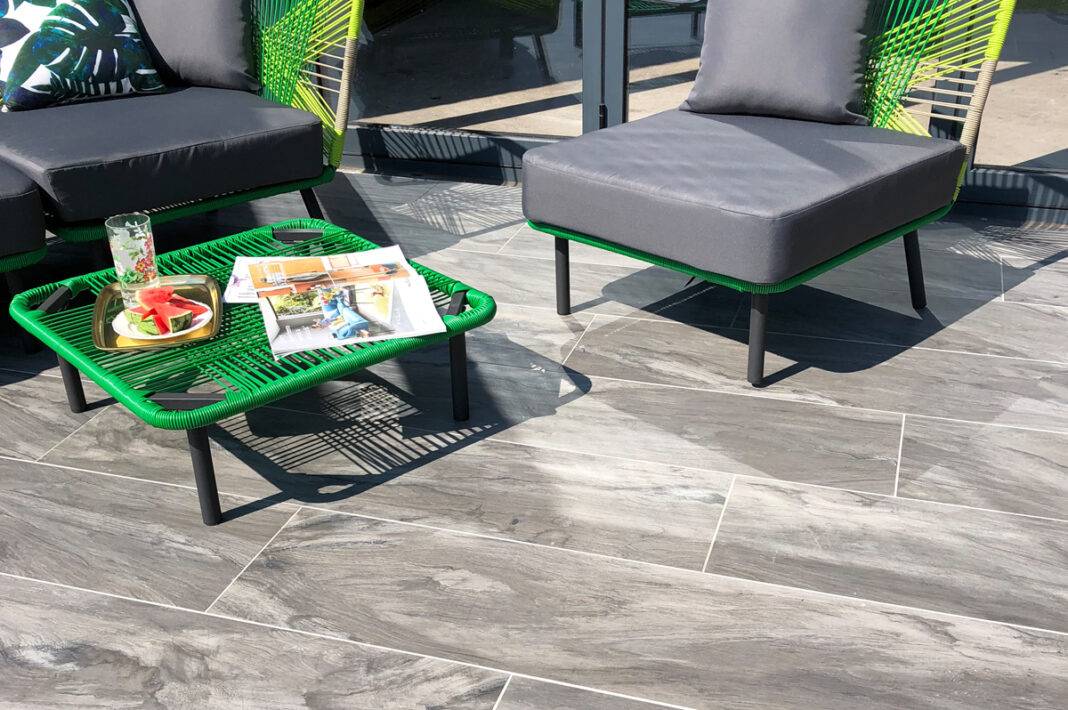Even before the start of the pandemic, a strong trend had been established in house building and renovation, in which the distinction between internal and external living space was becoming increasingly blurred.
This trend has only accelerated since March 2020, as people have been obliged to spend increasing amounts of time at home and have been wanting to make their available space work better for them.
This has implications for tile fixers working in external areas, and in particular for those working with grouts. Firstly, they should ensure that the grout is suitable for use with the substrate on to which the tiles or slabs have been laid. It is important to note that the laying of tiles, slabs or natural stone on to compacted hardcore in a sand: cement mortar is outside the scope of BS 5385 and is, therefore, not recommended.
In installations where this method of fixing has been used, a brush-in grout, such as Norcros Rock-Tite Brush-In Grout, should be used. This is part of the Rock-Tite system, which comprises a Primer and a Mortar, as well as the Brush-In Grout. It is designed for use by landscapers and garden designers, as well as tile fixers, capitalising on the growth in popularity of porcelain and stone tiles, which are increasingly being used externally as a more fashionable alternative to timber decking or concrete pavers.
The added benefit of using the Rock-Tite Brush-In type of grout is that, if over time cracks or voids appear in the grout, they can easily be re-filled. When slabs are laid up to a building then they should be laid to falls of around 25mm in every 1.5m to allow water to drain away. Alternatively a drainage channel may be installed.
If the slabs have been laid on to concrete or a cement: sand screed then a cement-based grout such as a grout from the Norcros 4 into 1 range should be used. Norcros 4 into 1 has the key features of 4 benefits in 1 grout, namely: Fast setting; Anti-bacterial; Flexible and Smooth Textured. The 4 into 1 range comprises 15 colours, reflecting current tile trends, and matching the Norcros Flexible Wide Joint grout range.
When using a cement-based grout there is always a risk of efflorescence occurring. Even with an efflorescence-resistant grout, such as Norcros 4 into 1, salts can rise from the background and be deposited on the surface of the grout. It is worthwhile noting that BS 5385 does recommend that a suitable damp proof membrane is incorporated within the subfloor which will inhibit the formation of efflorescence from this source.
When grouting, it should be ensured that the correct joint widths are incorporated in the installation. The minimum gaps are 3mm between porcelain tiles and 5mm between natural stone slabs.
Finally temperature control is not possible when working externally, and work should not be carried out if the ambient temperature is less than 5oC.
T:01782 524140
W: www.norcros-adhesives.com








